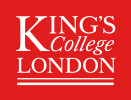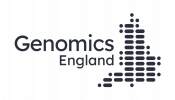© Pint of Science, 2025. All rights reserved.
Wanna find out the science behind disease? Come join us and our speakers and discover how DNA influences our behaviour and the diseases we catch! You can also play games yourself and win Prizes.
"The DNA revolution in the life sciences "
Professor Robert Plomin
(Professor of Behavioural Genetics)
Inherited DNA variants play a major role in the origins of most biological, medical and behavioral traits. Since the double helix was described in 1953, the goal has been to identify some of the DNA variants responsible for these heritable influences. However, until a decade ago, DNA variants could only be identified for rare single-gene disorders, not the common disorders that represent the major burden in society. I will describe the biotechnological advances responsible for the DNA revolution that has transformed the life sciences.
How radioactive chemicals help us understand when the body goes wrong
Dr George Keeling
(Researcher )
Our bodies are fuelled, maintained, repaired and cleaned up by a huge number of different chemical reactions and biological processes which exist in a fine balance. Sometimes even a small disturbance can lead to serious health issues but finding out what goes wrong is not straightforward. In this talk we will look at how we can design, develop and deploy radioactive chemicals to help us understand what is going wrong in the body, how to treat it and whether the treatment is working.
Improving our understanding of heart function with computer models
Marina Strocchi
(Research Associate)
The heart is a complex organ coordinated by mechanisms that span from tiny proteins lying on the cell surface to the whole body. Understanding how these processes work, adapt to different diseases and fail is fundamental for cardiologists to treat patients at the best of their abilities. This talk will show how we can build mathematical representations (or models) of the heart and its function, starting from clinical data. These models can then be used to help doctors understanding cardiac function better, and to achieve improved patient outcome.
Map data © OpenStreetMap contributors.

